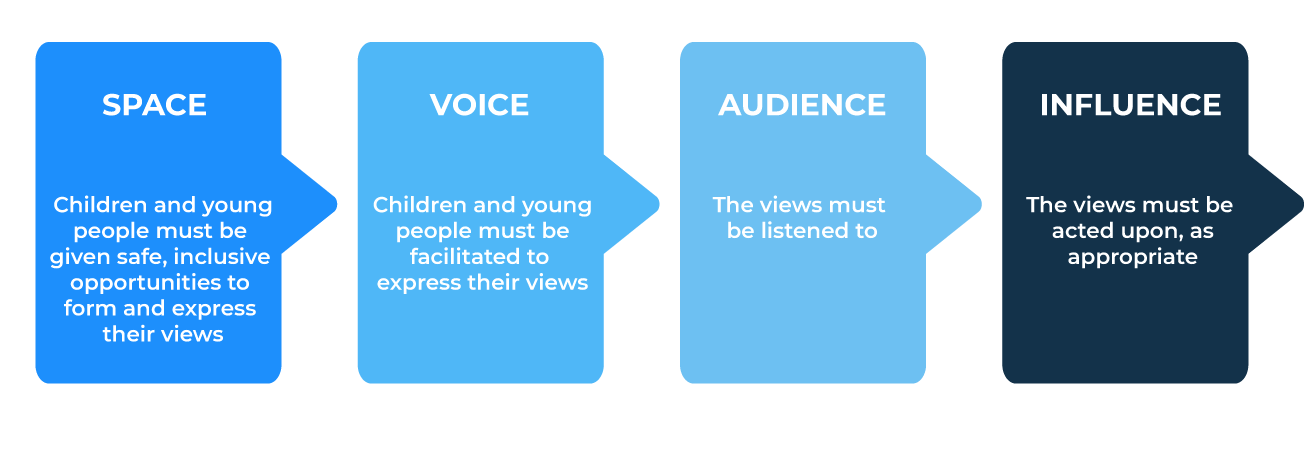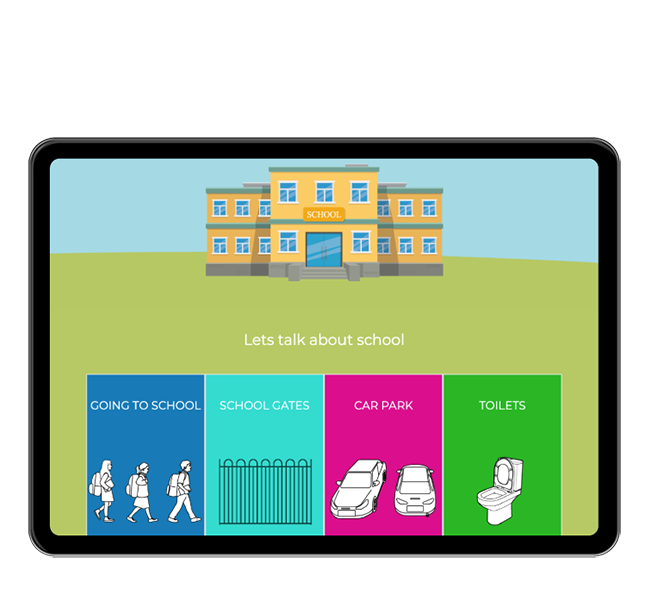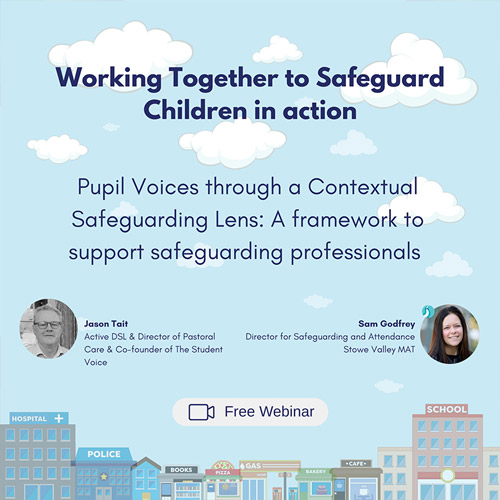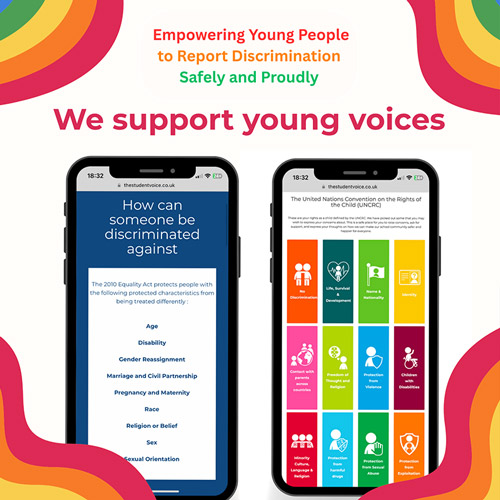The Student Voice and the Implementation of the Lundy Model of Participation
Lundy’s model provides school leaders with guidance on the steps to take in order to give children and young people a meaningful voice in our schools. In our last blog we covered Article 12, the barriers to reporting and the benefits of inviting students to participate in decision making. In this blog we will provide guidance as to how to implement the Student Voice Contextual Safeguarding Tool using the four elements of the Lundy model of participation:
- SPACE
- VOICE
- AUDIENCE
- INFLUENCE

(Department of Children, Equality, Disability, Integration and Youth, Hub na nÓg and Professor Laura Lundy of Queens University, Belfast, 2017)
Get our blogs sent straight to your inbox.
Bringing together the Lundy Model, The Student Voice and Contextual Safeguarding: Your planning and evaluation guides
We have adapted Lundy’s model of participation to provide schools with the following guide that will support the successful implementation and embedding of The Student Voice Contextual Safeguarding tool into your setting. Download them via the button below.
To conclude: Safeguarding needs to place listening to children and young people at its core
Dr Carlene Firmin, through Contextual Safeguarding, recognised that we need to accept that we do not understand the life experiences of young people and that to safeguard young people from future harm we need to listen to them in order to do so. The evidence from Everyone’s Invited is a public and stunning example of such concerns and such failings. Ofsted have responded by challenging schools to remove barriers to reporting. The Student Voice Contextual Safeguarding tool that is now influenced and shaped by the Lundy model of participation is an attempt to create brave spaces that will that empower young voices and inspire society to develop safer communities.
How our schools embed the Lundy Model and build authentic student participation
The Student Voice tool is very versatile and is designed to be used for overall student well-being, not just safeguarding. Download our booklet for a guide on how to implement The Student Voice. It shows how the tool supports The Lundy Model in enabling meaningful student participation.








